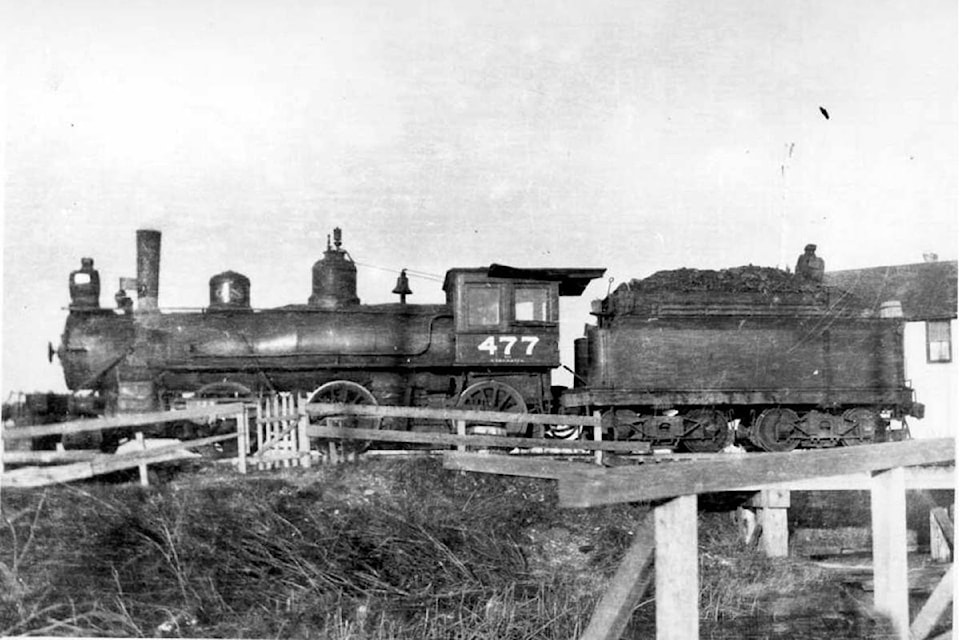By Nancy Demwell, Delta Museum and Archives Society
The Great North Railway coastal spur, begun in 1904, impacted the lives of North Deltans by separating their homes from the Fraser River. Houses and lands were expropriated, and throughways for launching boats and watering livestock were disrupted. Where homes once looked out on the Fraser they now looked across at the tracks and in 1909, when the trains began to run, the grime of coal and oil-burning trains left its mark.
The railway was constructed on the south shore of the Fraser from the foot of the new rail bridge at Brownsville (where the Pattullo Bridge now stands) down to Boundary Bay, across to Crescent Beach and White Rock, and ending in Blaine, Wash. It was built to provide an alternative to the Great Northern Railway spur built in 1881 that ran from Brownsville up the steep grade to Port Kells, then south to Cloverdale and on through wetlands to the terminus at Blaine. The new coastal provided a shorter and flatter alternative.
Initially, the railroad’s construction was greeted in North Delta as a source of off-season work for the fishermen and cannery workers, but soon they realized that the railroad had its own crews and little work would be brought by its construction. With the coming of the railway, George Mackie and other investors launched a project to build an industrial park in the Sudbury area, where the Alex Fraser Bridge has its foundations today. The industrial park was to be named “Steel City.” The land was appropriated and some home owners were displaced, but the project ran out of funds before it began.
In Annieville, the railroad was to be built at the doorstep of the Trinity Lutheran Church. The church, which had just been dedicated in 1904, was demolished in 1905. Each board was numbered as the building was carefully taken apart and the church was reconstructed with improvements where it rests today on River Road. It was re-dedicated in 1909, the same year that the railroad was officially completed.
The Great Northern Railway provided transport for the shingles and logs harvested from the forests of what are now Kennedy Heights and Sunshine Hills. Passengers could travel to New Westminster from Brownsville, but for North Deltans hopping on a boat to pick up groceries in New Westminster or taking a wagon to market via the eight-foot carriage and foot bridge located overtop of the rail bridge was more practical. Although the new line provided a quick holiday trip to White Rock or Crescent beach, most North Deltans found the fare too expensive for a family outing and took the wagon or car on the dirt road instead.
For the communities of Cloverdale and White Rock, the new Great Northern spur was of greater consequence. For Cloverdale it signaled a decline in its importance as a transportation hub, and for White Rock it brought access to the beach town as a resort and a customs port for the American border.
Nancy Demwell is a board member with the Delta Museum and Archives Society.
